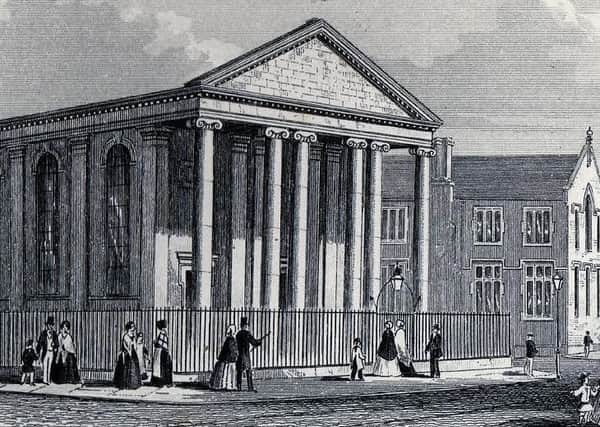Tragic death of pupil who was struck on head by teacher


John William Bennett, a Preston schoolboy, aged eight, son of a blacksmith who lived on Lancaster Road, died on the last Tuesday of March 1885 after a short illness.
During his troubled final days he complained of having been struck on the head by his teacher at All Saints School in Elizabeth Street. The rumours surrounding the tragic death reached the police and Christopher Sedgwick, a pupil teacher, was questioned about the allegations and a post-mortem examination was carried out.
Advertisement
Hide AdAdvertisement
Hide AdThe inquest into the death took place at the beginning of April 1885 at the Earl Street police station before the coroner Mr. William Gilbertson. Dinah Bennett, the boy’s mother, said the deceased had been ill since he came home from school at dinner time two weeks before his death. His eyes were swelled up with crying, and she asked him what was the matter. He replied that the teacher had been hitting him on the head with a cane, and had then kicked him on his leg before pressing his knuckles on his right temple. He was sent back to school in the afternoon, and when he returned for tea he complained his head was aching. The next day was a school holiday, so he stayed at home, but continually complained of his head aching.
Despite getting some medicine from a druggist he was no better over the weekend, so she took him to Dr. Lightbourne who told her it was evident that the blow to the head was causing the pain and gave her medicine and a certificate to excuse John from school.
Over the next few days he gradually got worse, often being insensible and, despite the doctor’s best efforts, he slipped into death.
A number of the schoolboy’s class mates were then called to give evidence, including William Clarkson, of Corry Street. He remembered the deceased crying on the last day he saw him at school.
Advertisement
Hide AdAdvertisement
Hide AdHe said that Mr Sedgwick hit the deceased on the wrist with a big stick, which made him cry and also struck him on the forehead. He did not see the teacher strike him with his hands.
They were doing sums at the time. The teacher also spoke to John, but he did not know what he had said. Another lad Robert Sharples, of High Street, remembered the deceased telling him he had a headache and he claimed the teacher had hit himself and the deceased on the head with his knuckles, because they had been talking in the classroom.
Dr Lightbourne told the inquest how he had treated the lad for his pains and prescribed medicines, and that eventually he lost all consciousness. He had carried out a post mortem on the body and reported that he had found no external or internal marks of violence on the head.
He had found symptoms of inflammation of the membranes of the brain, particularly at the base of the brain. He concluded by stating that in his opinion death was from inflammation of the brain, caused in a natural way.
Advertisement
Hide AdAdvertisement
Hide AdThe coroner in summing up stated that considering all the evidence, particularly that of Dr Lightbourne, the jury could reach no other conclusion than the boy had died of natural causes.
Nonetheless, he regarded it as very reprehensible that any master should strike a boy with a stick anywhere but on the place nature had provided for the purpose.
The jury duly returned a verdict of ‘natural causes’. Mr.Makinson, the headmaster of the All Saints’ School, expressed his sympathy for the boy’s family and stated that the teachers were not allowed to strike scholars and that Sedgwick had only been a candidate under probation, but should have know better.
All Saints Church dates back to 1848 and these days is an evangelical Anglican church.
The school buildings have been replaced by apartments and only memories remain of the highly regarded schools for boys and girls opened in the early 1850s.